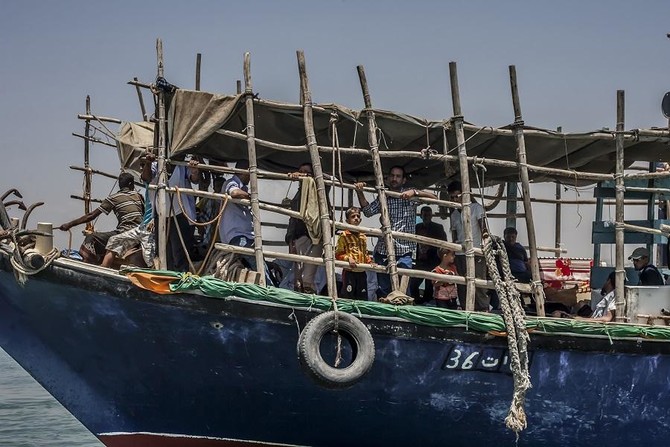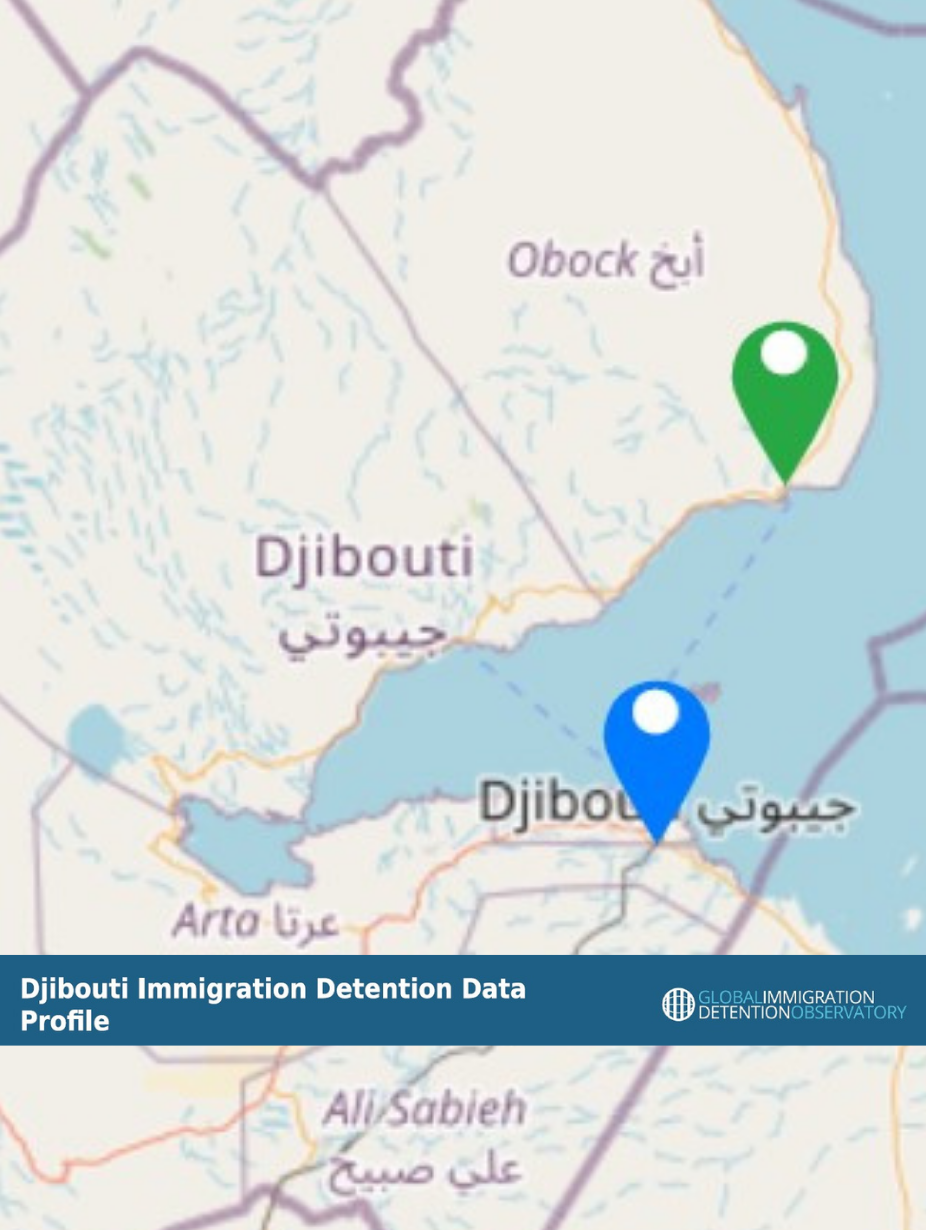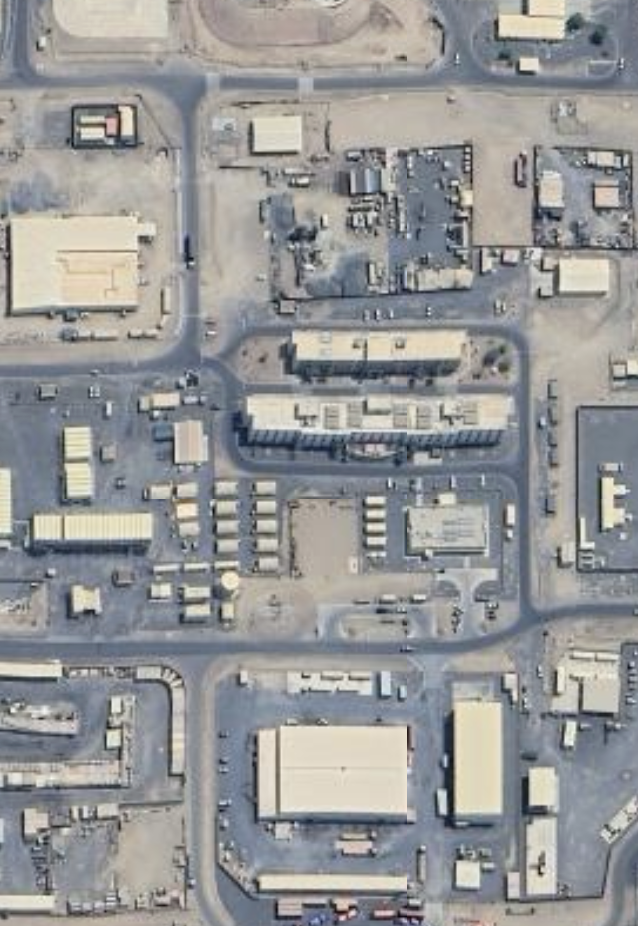In May, eight men were flown from the United States to a U.S military facility in Djibouti, where they have since been detained in a converted shipping container. Here, detainees face extreme heat, lack of necessary medications, combat-esque movement restrictions, and poor quality air. The use of a military base for immigration detention related purposes, meanwhile, appears to be part of a wider U.S trend, raising serious concerns for detainees’ fundamental rights. […]
Djibouti’s Crackdown Against Irregular Migrants
As Djibouti’s role as a source and transit point for migrants and asylum seekers attempting to travel to the Arabian Peninsula increases, so do the perils facing migrants both in Djibouti–where they face arrest and detention–and after their departure from the country, during dangerous journeys across the Gulf of Aden. The “Eastern Route” According to […]

Djibouti: Covid-19 and Detention
Djibouti is a source and transit country for migration, to and from the Arabian Peninsula. The GDP has reported in the past that authorities regularly rounded up and arrested undocumented migrants, who were then detained in poor conditions. In the context of the pandemic, the closure of the Ethiopian border caused the blockage of migrants, […]

Last updated: August 2016
Djibouti Immigration Detention Profile
Djibouti plays an important role as a transit country for migrants from the Horn of Africa travelling to Yemen, Saudi Arabia, and other Gulf States, with an estimated 34,237 migrants arriving in Yemen via Djibouti during the first 10 months of 2014. In an effort to reduce this flow of migrants, authorities in Djibouti regularly round up and arrest migrants travelling through the country without proper documentation.[1]
Djibouti’s efforts to slow the flow of transit migrants include patrolling the coastline and intercepting migrants found at sea. In 2012, approximately 3,533 migrants were intercepted as they were making their way to Yemen. These intercepted migrants are reportedly returned to Djibouti, where they are sent to detention facilities to await deportation.
In addition to being a transit country, Djibouti serves as a destination country for refugees and migrants from surrounding countries. In the Ali Addeh and Hol Hol refugee camps, Djibouti hosts roughly 21,000 refugees.
The Regional Mixed Migration Secretariat reports that during the course of 2013, Djibouti detained and deported significant numbers of migrants. While these migrants were generally given the opportunity to claim refugee status, the National Eligibility Commission had not met in years to undertake status determination procedures. When the Commission resumed its work in August 2013, there was a serious backlog of individuals at risk of being deported. Those migrants who did not claim refugee status were generally deported.
Detained migrants in Djibouti appear to be held mainly in two locations, the Coast Guard base in the port town of Obock and the Nagad Detention Centre near Djibouti City. Although conditions at the Nagad detention centre have been described as poor, detainees reportedly have access to potable water, food, and medical treatment. Foreign embassies and the International Committee for the Red Cross (ICRC) reportedly have access to the Nagad facility, and Djiboutian authorities have allowed ICRC representatives to visit the detention centre on a quarterly basis. Although most detainees are reportedly deported within 24 hours of arrest, there has been at least one situation in which hundreds of refugees were detained in the Nagad Detention Centre for more than five years.
A particularly important aspect of Djibouti’s migrant detention practices is its detention of children. Many children intend to travel through Djibouti to the Gulf States, but become stranded in the country due to their inability to afford the trip across the Gulf of Aden. These migrant children are frequently arrested and detain by Djiboutian authorities. While in detention, children are placed in overcrowded cells with other detainees, receive irregular and inadequate meals, and face a lack of sanitary services. There have also been reports of abusive behaviour by officials, including sexual abuse by detention centre guards.
[1] This summary relies primarily on information gleaned from the U.S. State Department’s human rights reports and reports from the Regional Mixed Migration Secretariat, in particular its February 2015 report Behind Bars: The Detention of Migrants in and from the East & Horn of Africa, available at http://www.regionalmms.org/fileadmin/content/rmms_publications/Behind_Bars_the_detention_of_migrants_in_and_from_the_East___Horn_of_Africa_2.pdf.
DETENTION STATISTICS
DETAINEE DATA
DETENTION CAPACITY
ALTERNATIVES TO DETENTION
ADDITIONAL ENFORCEMENT DATA
PRISON DATA
POPULATION DATA
SOCIO-ECONOMIC DATA & POLLS
LEGAL & REGULATORY FRAMEWORK
Does the Country Have Specific Laws that Provide for Migration-Related Detention?
Detention-Related Legislation
GROUNDS FOR DETENTION
Immigration-Status-Related Grounds
Criminal Penalties for Immigration-Related Violations
Grounds for Criminal Immigration-Related Incarceration / Maximum Length of Incarceration
DETENTION INSTITUTIONS
PROCEDURAL STANDARDS & SAFEGUARDS
COSTS & OUTSOURCING
COVID-19 DATA
TRANSPARENCY
Global Detention Project/Partner Access to Information Requests/Results
MONITORING
NATIONAL HUMAN RIGHTS MONITORING BODIES
NATIONAL PREVENTIVE MECHANISMS (OPTIONAL PROTOCOL TO UN CONVENTION AGAINST TORTURE)
NON-GOVERNMENTAL ORGANISATIONS (NGOS)
GOVERNMENTAL MONITORING BODIES
INTERNATIONAL DETENTION MONITORING
INTERNATIONAL TREATIES & TREATY BODIES
International Treaties Ratified
Ratio of relevant international treaties ratified
> UN Special Procedures
> UN Universal Periodic Review
REGIONAL HUMAN RIGHTS MECHANISMS
Regional Legal Instruments
HEALTH CARE PROVISION
HEALTH IMPACTS
COVID-19
Country Updates
Government Agencies
Ministry of Foreign Affairs and International Cooperation: https://diplomatie.gouv.dj/
Minintry of Interior - https://interieur.gouv.dj/communique/
International Organisations
UNHCR Djibouti Country Website: http://www.unhcr.org/afr/djibouti
IOM Djibouti: http://ronairobi.iom.int/djibouti
NGO & Research Institutions
Human Rights Watch Djibouti: https://www.hrw.org/africa/djibouti
Caritas Djibouti - https://www.facebook.com/djibouticaritas
Global Djibouti D - https://globaldjiboutidiaspora.com/




